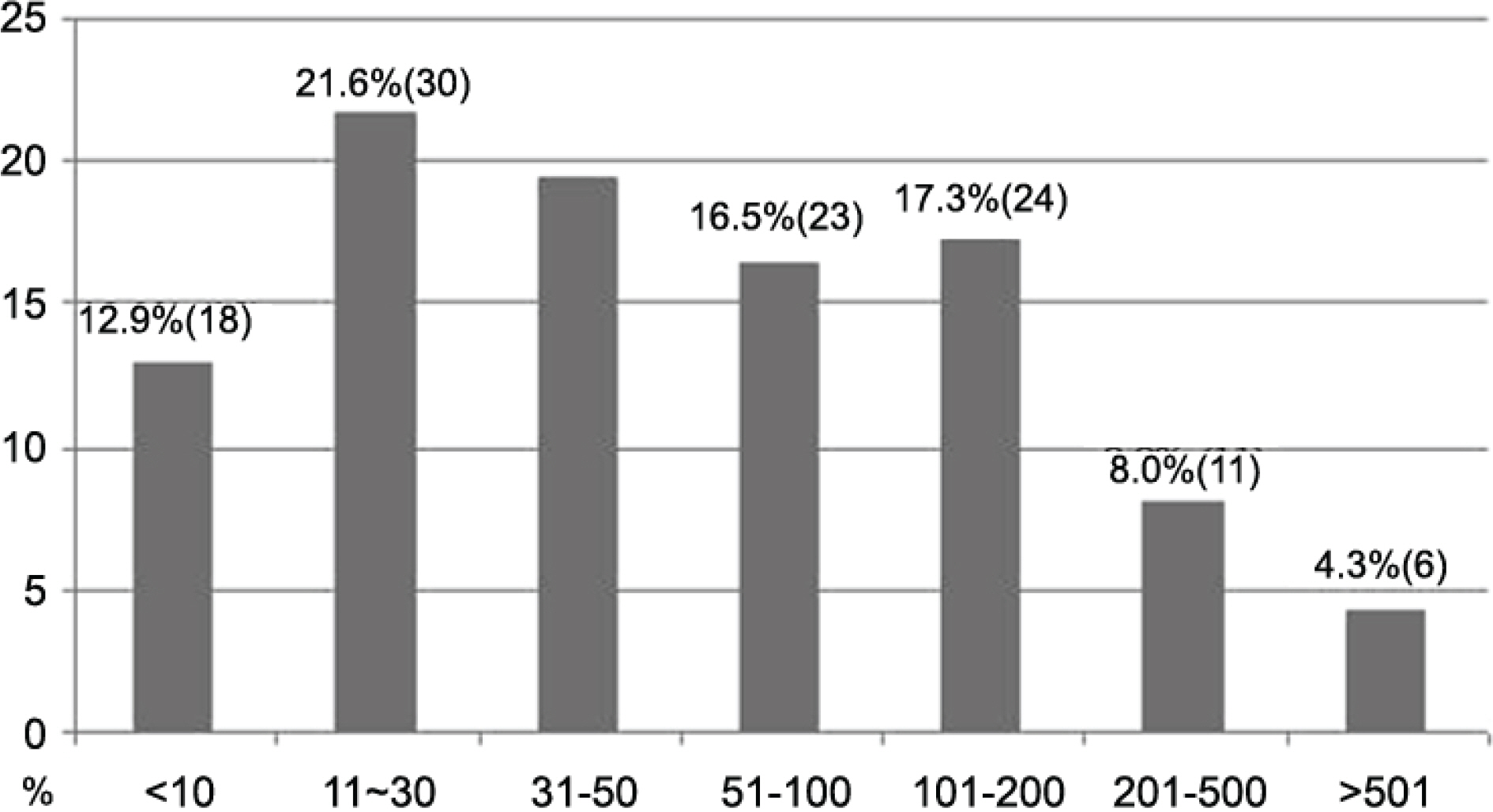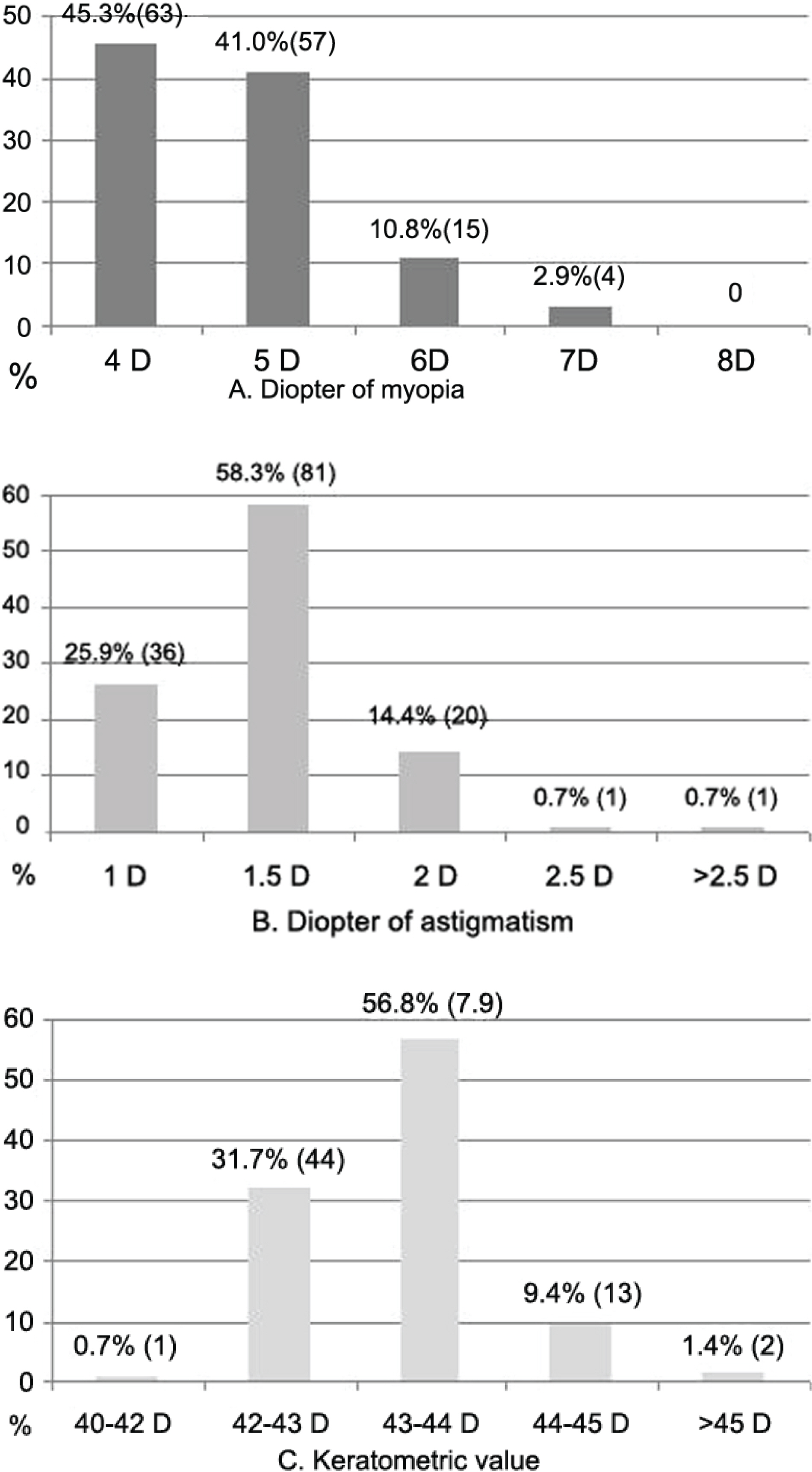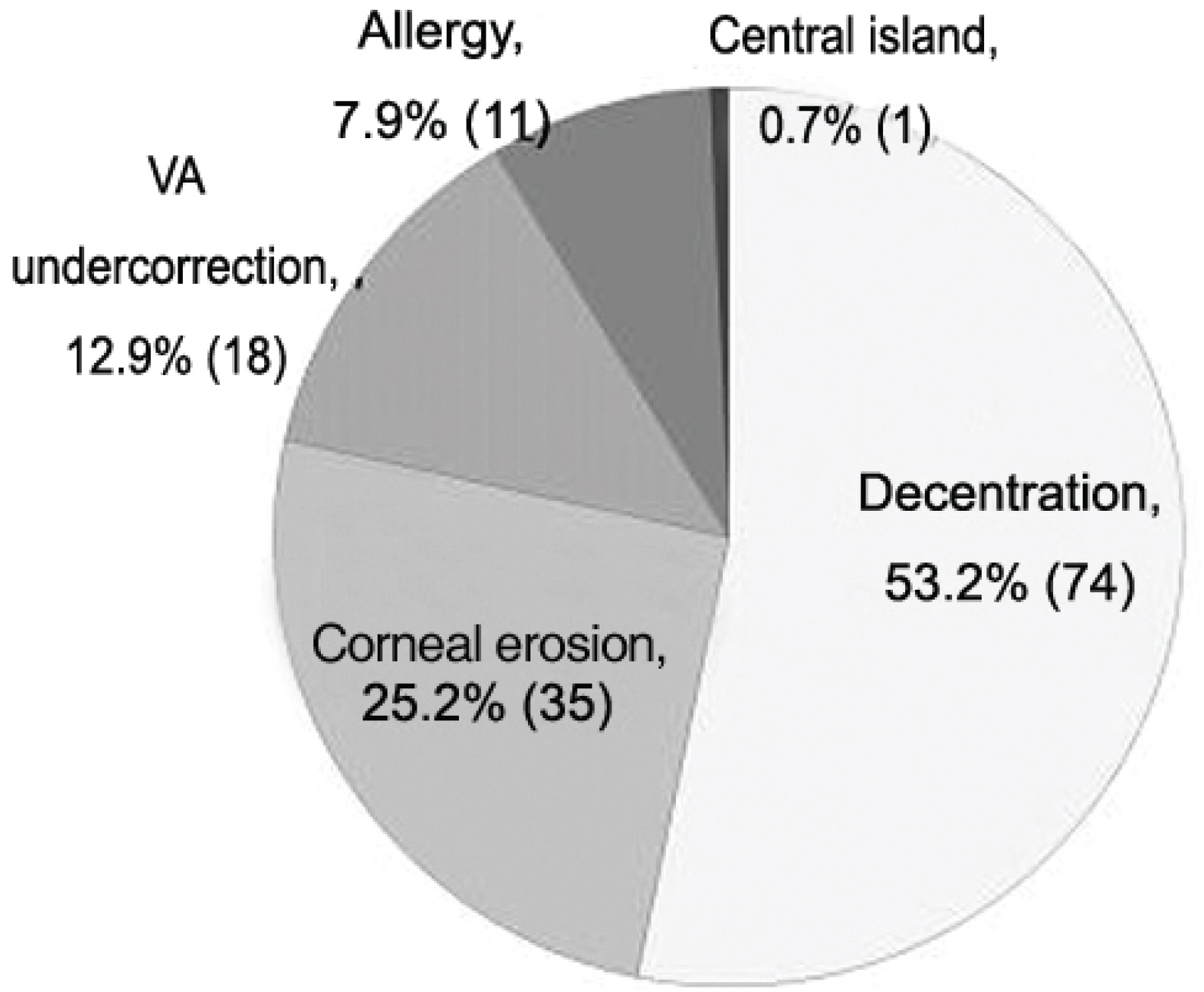J Korean Ophthalmol Soc.
2009 Apr;50(4):505-509. 10.3341/jkos.2009.50.4.505.
The First Survey Report on the Current Trends in Prescription of Orthokeratologic Lenses in Korea
- Affiliations
-
- 1Department of Ophthalmology and Visual Science, Seoul St. Mary's Hospital, College of Medicine, The Catholic University of Korea, Seoul, Korea.
- 2Korean Eye Tissue and Gene Bank Related to Blindness, Seoul, Korea. ckjoo@catholic.ac.kr
- KMID: 2212249
- DOI: http://doi.org/10.3341/jkos.2009.50.4.505
Abstract
-
PURPOSE: To investigate the current trends in the prescription of orthokeratologic lenses in Korea.
METHODS
We sent out an online survey to the members of the Korean ophthalmological Society in December 2007 and March 2008. We received responses from 139 ophthalmologists and analyzed the results of each question.
RESULTS
Easy fitting (34.5%) was selected as a major factor in the selection of orthokeratologic lenses. Children between the ages of 10 and 15 years with myopia less than 5 diopter, astigmatism less than 1.5 diopter, and 42 to 45-diopter keratometric value were preferred by most respondents. Decentration (n=74, 59%), corneal erosion (n=35, 25.2%), undercorrection (n=18, 12.9%), and allergy (n=11, 7.9%) were the most frequently encountered problems. 54.7% (n=76) of respondents needed to be fitted twice for trial lenses. The time required for the lens prescription in one patient was more than 30 minutes in 83.5% (n=116) of respondents. 59.7% of the respondents agreed that the lenses had an inhibitory potential on myopic progression, and 81.3% of the respondents said that orthokeratology could substitute for refractive surgery.
CONCLUSIONS
There is a possibility of future growth in the use of orthokeratology. It is necessary to provide guidelines and teaching programs for the safe and effective fitting of orthokeratologic lenses.
Keyword
MeSH Terms
Figure
Reference
-
References
1. Jessen GN. Orthofocus techniques. Contacto. 1962; 6:200–4.2. Yun YM, Kim MK, Lee JL. Change of Corneal Parameters after Removing Reverse Geometry Lens in Moderate Degree Myopia. J Korean Ophthalmol Soc. 2005; 46:1478–85.3. Chang JW, Choi TH, Lee HB. The Efficacy and Safety of Reverse Geometry Lenses. J Korean Ophthalmol Soc. 2004; 45:908–12.4. Shin DB, Yang KM, Lee SB, et al. Effect of Reverse Geometric Lens on Correction of Moderate-degree Myopia and Cornea. J Korean Ophthalmol Soc. 2003; 44:1748–56.5. Jee DH, Hong ME, Kim MS. The Efficacy and Safety of Ortho-K LK Lens. J Korean Ophthalmol Soc. 2003; 44:706–11.6. Cho P, Cheung SW, Edwards M. The longitudinal orthokeratology research in children (LORIC) in Hong Kong: a pilot study on refractive changes and myopic control. Curr Eye Res. 2005; 30:71–80.
Article7. Walline JJ, Rah MJ, Jones LA. The Children's overnight orthokeratology investigation (COOKI) pilot study. Optom Vis Sci. 2004; 81:407–13.
Article8. Walline JJ. Study design issues in a corneal reshaping contact lens myopia progression study. Eye Contact Lens. 2004; 30:227–30.
Article
- Full Text Links
- Actions
-
Cited
- CITED
-
- Close
- Share
- Similar articles
-
- Clinical Characteristics of Prescribing Orthokeratology Lenses in Adult
- Analysis of the Cause of Failure in the Correction of Childhood Myopia Using Orthokeratologic Lenses
- Research on the Current Status of Contact Lenses in Korea
- 2006 Survey for KSCRS Members: Current Trends in Cataract Surgery in Korea
- 2004 Survey for KSCRS Members: Current Trends in Cataract Surgery in Korea





